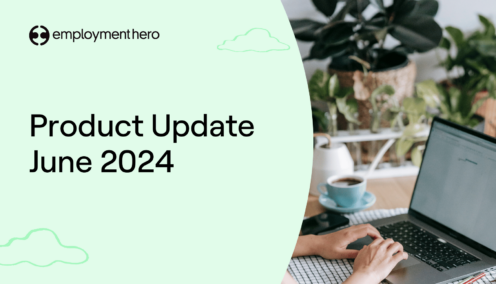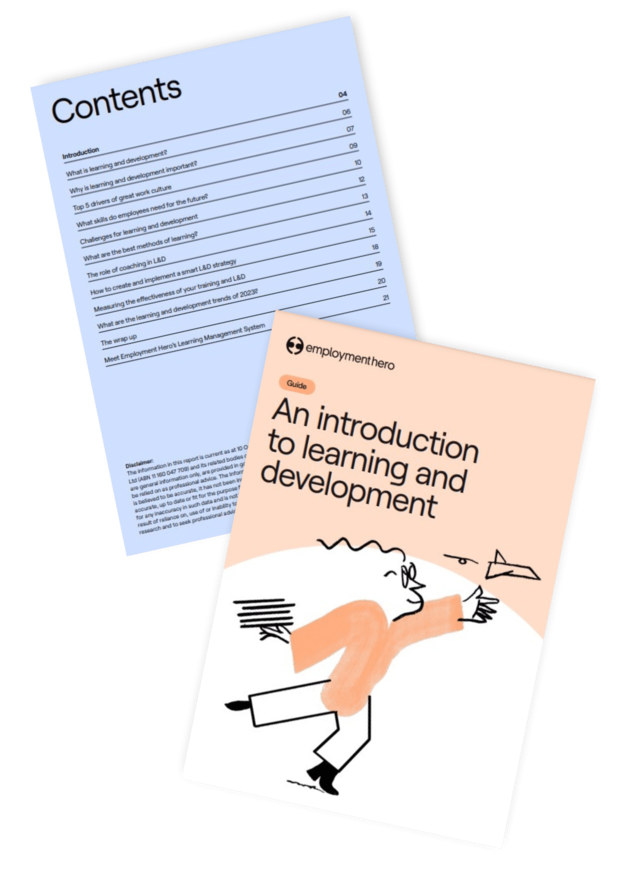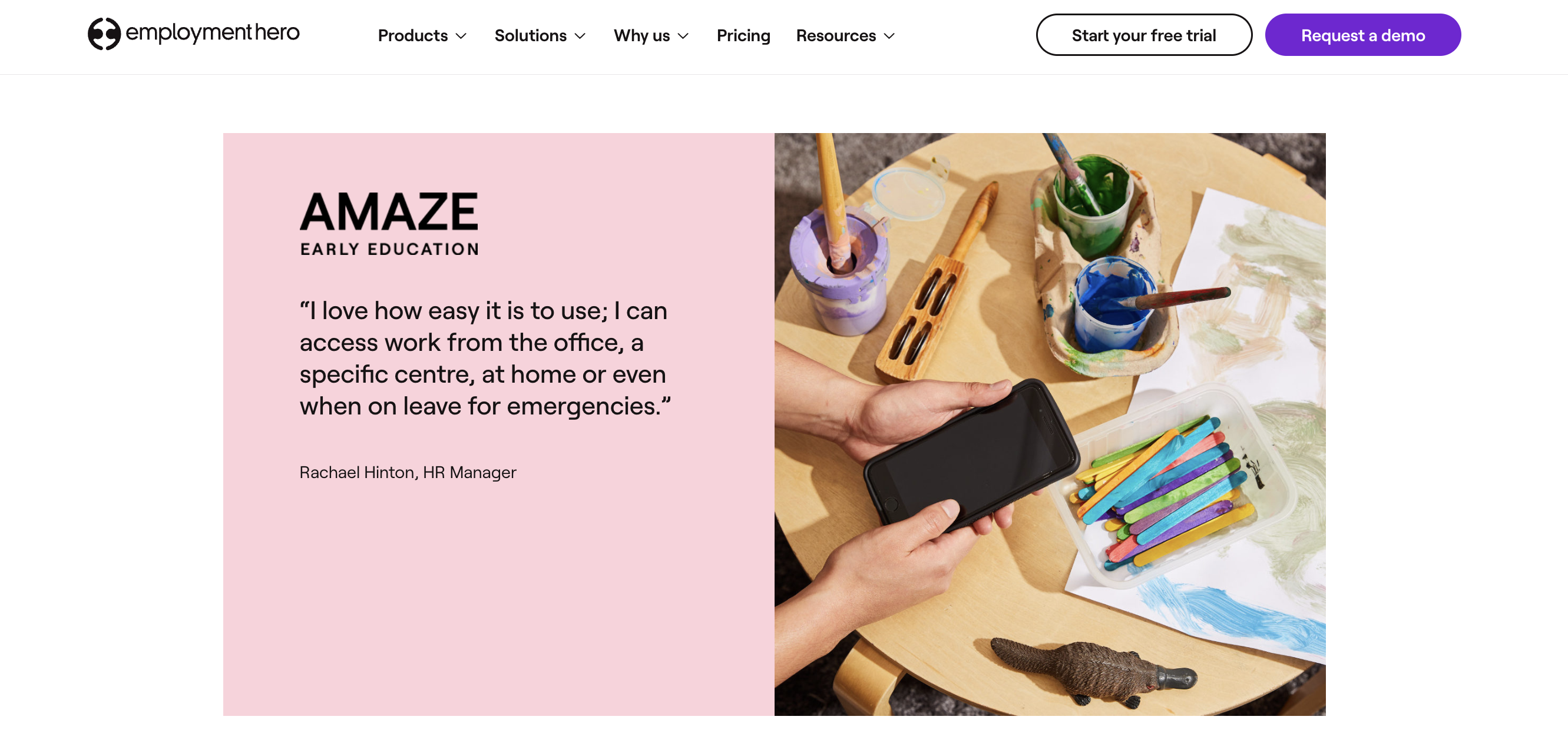
Businesses need to be able to move with the times and provide learning opportunities in ever-changing and innovative ways.
Our Employee Movement and Retention Report found that ‘lack of career opportunities’ is a leading reason why employees are seeking a new role. L&D leaders are under pressure from employees’ demands for growth and purpose, and they’re grappling with the urgent challenge of future-proofing their businesses – yet L&D teams are critical in creating these opportunities and fostering a nurturing company culture.
That’s why we’ve created this complete guide to learning & development.
The Guide also covers;
- Why learning and development is important
- What skills do employees need for the future?
- What are the best methods of learning?
- The role of coaching in L&D
- How to create and implement a smart L&D strategy
- Top learning and development trends of 2023
Disclaimer: The information in this article is current as at 10 October 2022, and has been prepared by Employment Hero Pty Ltd (ABN 11 160 047 709) and its related bodies corporate (Employment Hero). The views expressed in this article are general information only, are provided in good faith to assist employers and their employees, and should not be relied on as professional advice. The Information is based on data supplied by third parties. While such data is believed to be accurate, it has not been independently verified and no warranties are given that it is complete, accurate, up to date or fit for the purpose for which it is required. Employment Hero does not accept responsibility for any inaccuracy in such data and is not liable for any loss or damages arising either directly or indirectly as a result of reliance on, use of or inability to use any information provided in this article. You should undertake your own research and to seek professional advice before making any decisions or relying on the information in this article.
Download the guide now.

What is learning and development?
Learning and development is an important function within a business that is responsible for empowering employees’ growth and developing their knowledge, skills, and capabilities to drive better business performance.
The learning aspect is about the acquisition of knowledge, skills and mindsets through experience, study, training or teaching. Development is about broadening and deepening knowledge, often in relation to goals, objectives, or career aspirations set by the employee.
Traditionally, L&D was characterised by mandatory formal inductions and training courses.
However, today it is far broader and can cover anything from online platforms to game-based scenarios, listening to a podcast, or joining Boards, voluntary groups or advisory committees – even employees sharing expertise with their peers.
What is the role of a learning management system (LMS) in a business?
According to TechTarget, a learning management system (LMS) is a software application or web-based technology used to plan, implement and assess a specific learning process. But why would a business do this?
It’s simple.
Investing in your employees’ learning and development is crucial for business success. According to ‘Fortune’s 100 best companies to work for,‘ the 100 best companies are committed to employee development as a top strategic priority.
Employees are considered to be the most valuable asset of a company and investing in their training further enhances their capabilities and productivity, bringing about a suite of benefits that companies gain by focusing on training and development. This drives a company’s growth, success, and ultimately their revenue.
How can I measure learning effectiveness?
When it comes to learning and development, one of the biggest questions is ‘what is the return on learning?’ Or in other words, how effective is learning? How much will it benefit the business, and is the investment justified?
We know that L&D has enormous benefits for businesses, but it can often be hard to see specifically how, or where, it is benefitting the business. So how do you go about measuring the effectiveness of your learning and development programme?
The first thing to bear in mind is that what is measured, gets done. That means that regular measurement and reporting is essential to make decisions and improve your results. If your L&D strategy is not measurable, then you’ll struggle to get results.
On the other hand, if you have a strong system to implement and analyse learning, training and development, it will be easier to see how effective it is, particularly if your systems are cross-functional and can speak to each other. This will help you see where investments in learning and development are paying off, and where they might need to be tweaked.
There are different metrics to measure effectiveness by.
To measure satisfaction, look at direct feedback given by your employees:
- Was the training useful?
- Was it practical?
- Was it relevant?
- Would the learner recommend it?
Then look at learning outcomes:
- Course attendance or completion rates
- Learning outcome evaluations (measuring skills or knowledge before, during and after the learning activity to evaluate how the learning has been retained)
To complete the evaluation, measure the impact and results:
- Profitability or turnover figures
- Staff turnover rates
- Customer satisfaction scores
- Employee satisfaction or happiness scores
- Rates of promotion
- Performance reviews, 360-degree reviews, or feedback given in coaching sessions
- OKR or KPI completion rate
These metrics can be used to help determine the return on investment, or the benefits of the L&D initiative to the company in monetary terms.
10 statistics about learning and development in 2022
- 72% of HR professionals agree that L&D has become a more strategic function at their organisation.
- 76% of employees are more likely to stay with a company that offers continuous training.
- Research by TalentLMS found 67% of HR managers have an increased L&D budget in 2022; however 72% of HR managers said that they would invest in mental health and wellbeing training if they had a higher L&D budget.
- Companies that excel at internal mobility retain employees for an average of 5.4 years, nearly twice as long as companies that struggle with it, where the average retention span is 2.9 years.
- The top focus areas of 2022 L&D programs are leadership and management training. 46% of L&D leaders said upskilling or reskilling was a top focus area this year, while retention and internal mobility were closer to the bottom of L&D’s focus list.
- 50% of employees are pursuing learning opportunities on their own, outside of training at work.
- 32% of employees believe training should be both more social and updated more frequently.
- 30% of UK workers say they have not received formal workplace training in the last five years. For those who’ve never gotten any training from their employers, that number is 11%.
- 69% of employers globally are struggling to find skilled workers, especially in high-demand areas like Operations and Logistics, Manufacturing and Production, IT, Sales, and Marketing.
- Opportunities to learn and grow is now the number one factor that employees say defines an exceptional work environment.
Examples of Learning and Development programs at leading companies
1. Etsy
Etsy is becoming well known in the learning and development field for its Etsy School. Etsy is right to be proud of their learning and development team that merges innovative learning formats with evidence-based leadership practices.
Applying research from organisational psychology, sociology and adult learning theory — in addition to a deep knowledge of Etsy’s values and culture — the L&D team facilitates training, programmes, retreats and coaching. They also offer online resources on everything from how to invigorate a sluggish meeting to how to give difficult feedback.
Etsy is building a culture of continuous self-development, where employees have the ability to give and receive feedback that’s timely, useful and actionable. In 2015 they launched an innovative programme that facilitates year-round, 360-degree feedback collection, delivers rich information to employees, and enables them to own their development in partnership with their managers.
2. Google
Google embraces a culture of workplace learning, so it’s no surprise that their employee learning and development program is considered one of the best. Googles ‘G2G’ (Googler-to-Googler) learning method is based on the idea that everyone can learn something from everyone.
The G2G learning method promotes employee-to-employee learning. This allows all team members to upskill across the company, regardless of their role or seniority. Google’s continual educational mentality ensures that a culture of learning is maintained and employees are nurtured along their career paths.
3. Marriott International Inc.
Marriott International has been consistently named one of Asia Pacific’s best employers, and much of this comes down to their investment and commitment to employee development.
Natasha Rasheed, Area Director of Human Resources for Australia, New Zealand and the Pacific says
“We believe in taking care of our associates, so they in turn take care of our guests. It’s embedded in our DNA.”
Marriott International offers a comprehensive suite of training to employees around the globe, including new hire orientation, hotel-based training programmes, core management training programmes, and non-management training programmes such as Gateways which is designed to train discipline-specific skills. Their InMotion! Programme provides hands-on experience for supervisors to learn about different departments of the hotel and develop broader hotel expertise which help prepare them for management responsibilities. Marriott is committed to associate development, offering employees the opportunity to learn at their own pace through access to the Ashridge Virtual Learning Resource Centre.
Marriott’s learning and development programmes are designed to attract and retain a loyal team committed to the core values of excellence and service. Development programmes include:
- University.marriott.com programmes such as The Global Voyage Leadership Development program, intended to recruit and nurture recent university graduates and postgraduates
- The Marriott Development Academy, aimed at helping aspiring managers acquire the skills required for leadership roles
“Marriott International offers our associates training because we believe in the wellbeing and growth of each and every one,” says Arne Sorenson, President and CEO, Marriott International.
4. Employment Hero
Our very own Employment Hero’s Learning Plus is empowering small and medium businesses to attract and retain the best of the best – and it’s so good we swear by it too. All of our team has access to Learning Plus, which provides the Employment Hero team with access to comprehensive on-demand online courses so they can learn in their own time.
It’s a fully functional LMS which allows employers to build, manage, assign, track and report on all their learning and training needs, from induction and health and safety training, right through to professional development and leadership skills. We help our customers and our valued employees develop talent – it’s what drives any business forward.
Inside Learning Plus, employees can develop specific skills or follow career pathways.
Our Head of Learning and Development Garth Byrne says, “We are committed to delivering best-in-class learning opportunities for our incredible people… Our learning programs are tailored to meet the needs of our people, ranging from essential soft skills to leadership development. From learning and reinforcing your essential soft skills to developing your experience and knowledge of leadership, our L&D programs have got you covered!”
We know our employees love it, and we love when our clients rave about it too.

For more learning and development inspiration, check out these 7 Great Employee Learning Programs Examples.
Top tools for learning and development
As you can probably tell, we’re big fans of learning management systems – online platforms that allow your employees to follow their own learning and development pathways. You can subscribe to platforms with off-the-shelf content, or you can build your own with customised content specific to your training, L&D needs, and your learning and development strategies.
To decide which option is best for your business, you need to consider your company’s size, number of employees, budget, and skills gap. This can help you decide whether it’s better to curate your own content, or buy in from a specialist provider such as Employment Hero’s Learning Plus.
If you’re building your own content, or adding your own content to an existing platform, bear in mind that you’ll be responsible for keeping it relevant and up to date. This might make sense for larger businesses with considerable learning and development budgets. For SMEs, it can be advantageous to outsource your LMS so that the external organisation is then responsible for providing fresh and engaging content.
Meet Employment Hero’s Learning Management System
Introducing our Employment Hero LMS…
Learning Plus is an online tool that supports continuous professional development in your business. This is exactly the type of technology your business can invest in to make sure your employees have the right tools they need to develop, whether that’s in a controlled working environment or in their own time.
Learning Plus is just another way that Employment Hero is empowering small and medium businesses to attract and retain the best of the best. Here’s some of our favourite features:
Induction training
Employers with existing training content can now host this in Employment Hero, making it part of induction and even requiring completion before employees can be added to the roster. An audit trail will also help employers feel confident that they are compliant when it comes to policy acknowledgements and more.
Career development
Employers can also create or upload courses for employees who are moving into managerial roles or other new levels of responsibility. Employees who are provided with upskilling opportunities are more engaged than those who aren’t, making an LMS a key component of your employee value proposition.
Performance management
By using an LMS within Employment Hero, employers can better bridge the gap between employee performance and upskilling. When an employee fails to complete an OKR, or a performance review has identified an area of weakness, managers and admins can easily assign course content to fill in knowledge gaps as they become apparent.
Premium content
Businesses can also provide their employees with access to Learning Plus, an ever-growing library of premium learning content. With a Learning Plus subscription, employers and employees alike can choose from thousands of courses on a wide array of topics, from Java Programming for Beginners Preventing to Discrimination and Harassment for Managers.
The wrap up
Learning and development has multiple benefits – it supports employees’ personal growth and it also impacts the entire business, in both the productivity and profitability levels as a whole.
Focusing on learning and development allows your business to maintain a competitive edge and leads to higher customer satisfaction, higher employee satisfaction and retention, lower costs and faster growth all around.




